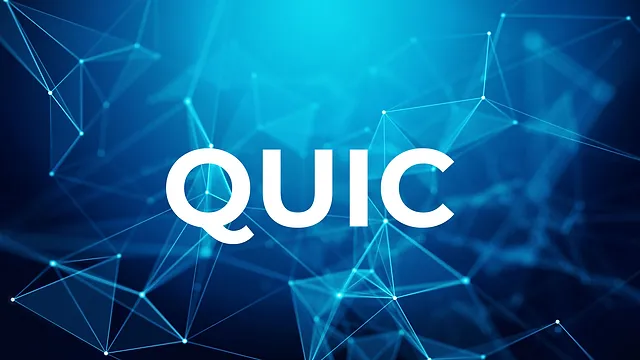The QUIC Working Group is focusing on enhancing internet traffic security by developing a new transport protocol that aims to make internet communication faster, more reliable, and more secure. The group is made up of experts from various companies and organizations who are dedicated to improving the overall security of internet traffic. They are working on implementing new encryption techniques and security measures to protect user data and prevent unauthorized access to sensitive information.
By improving the security of internet traffic, the QUIC Working Group hopes to create a safer and more secure online environment for users around the world. Their efforts are crucial in ensuring that internet users can communicate and exchange information without fear of interception or data breaches. The group’s commitment to enhancing internet traffic security is an important step towards creating a more secure and trustworthy online experience for all users.

Overview of QUIC Protocol Enhancements
The QUIC protocol, originally developed by Google, is a modern transport protocol designed to improve web performance. Over the years, several enhancements have been made to the protocol to further optimize its performance and security. One of the key enhancements is the integration of TLS 1.3 encryption, which ensures data confidentiality and integrity during transmission. This enhancement not only improves security but also helps in reducing latency as it eliminates the need for an additional handshake process.
Another significant enhancement is the integration of HTTP/3, which allows for faster and more efficient data transfer over the internet. By utilizing a new binary framing layer, HTTP/3 enables more efficient use of network resources, resulting in improved performance for users. Additionally, the QUIC protocol has been optimized for mobile networks, with features such as packet loss recovery and congestion control mechanisms that help in maintaining a stable connection even in challenging network conditions.
These enhancements make the QUIC protocol a reliable and efficient choice for modern web applications, providing a seamless user experience across different devices and network environments. With ongoing development and improvements, the QUIC protocol continues to evolve to meet the demands of the ever-changing internet landscape, ensuring fast and secure communication for users worldwide.
Security Features in the QUIC Protocol
The QUIC protocol is a modern transport layer protocol developed by Google that aims to improve performance and security for internet communication. One of the key features of QUIC is its built-in security mechanisms, which help protect against a range of common attacks. QUIC utilizes encryption to ensure that data exchanged between clients and servers is secure and cannot be intercepted or tampered with by malicious actors.
This encryption is provided by default, making QUIC a more secure option compared to traditional protocols like TCP. Additionally, QUIC includes features such as connection migration, which allows for seamless transitions between different network interfaces without compromising security. Another important security feature of QUIC is its use of 0-RTT (zero round trip time) handshakes, which allow for faster connections while still maintaining strong security protocols. Overall, the security features in the QUIC protocol help to protect user data and ensure that communication over the internet is secure and reliable.

Benefits of QUIC for Internet Traffic Security
QUIC, or Quick UDP Internet Connections, offers several benefits for enhancing internet traffic security. One key advantage is its ability to provide improved protection against potential security threats, such as man-in-the-middle attacks and eavesdropping. By encrypting all data exchanged between a client and server, QUIC ensures that sensitive information remains secure and cannot be intercepted by malicious actors.
Additionally, QUIC’s built-in support for forward secrecy helps prevent the decryption of past communications even if a server’s private key is compromised in the future. This added layer of security significantly reduces the risk of data breaches and unauthorized access to sensitive information. Furthermore, QUIC’s multiplexing capabilities allow for the simultaneous transmission of multiple data streams over a single connection, reducing latency and improving overall network performance.
This can help mitigate the impact of DDoS attacks and other forms of network congestion, ensuring that internet traffic remains secure and reliable. Overall, the adoption of QUIC as a standard protocol for internet traffic can greatly enhance the security and privacy of online communications, providing a safer and more secure browsing experience for users around the world.

Challenges in Implementing QUIC
QUIC, or Quick UDP Internet Connections, is a relatively new transport protocol developed by Google that aims to improve web performance and security. However, despite its many benefits, there are several challenges in implementing QUIC. One of the main challenges is the lack of widespread support for the protocol. While major web browsers like Chrome and Firefox have started to adopt QUIC, many websites and servers have yet to make the switch.
This can lead to compatibility issues and performance bottlenecks for users trying to access QUIC-enabled sites. Additionally, there are concerns about the potential impact of QUIC on network congestion and fairness. Since QUIC is designed to prioritize speed and efficiency, there is a risk that it could lead to unfair advantages for certain users or applications. Another challenge is the complexity of the protocol itself.
QUIC introduces several new features and functionalities that can be difficult for developers to understand and implement correctly. This can lead to bugs, security vulnerabilities, and other issues that could compromise the stability and reliability of QUIC connections. Overall, while QUIC offers many advantages in terms of speed, security, and performance, there are still several challenges that need to be addressed before it can be widely adopted and fully integrated into the modern internet infrastructure.
Future Directions for the QUIC Working Group
The QUIC Working Group is currently focused on exploring future directions to improve the efficiency and security of internet communication. One direction that the group is considering is the development of new protocols and algorithms to enhance the performance of QUIC.
This includes optimizing congestion control mechanisms, improving packet loss recovery strategies, and enhancing the overall reliability of QUIC connections. Additionally, the group is exploring ways to further enhance the security of QUIC by implementing new cryptographic algorithms, improving key exchange mechanisms, and enhancing the protection of user data. Another important direction for the group is to continue collaborating with other standardization bodies and industry stakeholders to ensure interoperability and widespread adoption of QUIC.
This includes working closely with organizations such as the Internet Engineering Task Force (IETF) and the World Wide Web Consortium (W3C) to align QUIC with existing internet standards and protocols. Overall, the future directions for the QUIC Working Group are focused on advancing the state of internet communication by improving performance, security, and interoperability through collaborative efforts and ongoing research and development.
